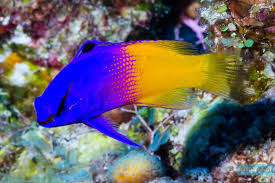
Dragons, those majestic, mythological creatures that have captivated the imaginations of people for centuries, continue to serve as a source of inspiration for writers around the world. These legendary beasts, which have appeared in various forms across different cultures, have become more than just symbols of fear or power; they represent a deep, enigmatic force that fuels creativity and exploration in contemporary literature. In this article, we will explore how dragons serve as a muse for modern writers, how they are woven into stories, and the deep connections between dragons and themes of transformation, power, wisdom, and fear.
1. The Cultural Significance of Dragons
Dragons are not mere fantasy creatures; they are deeply ingrained in the cultural, religious, and historical traditions of many societies. From the fiery, fearsome dragons of Western mythology to the wise, auspicious ones in Eastern lore, the dragon holds a diverse range of meanings. For modern writers, the dragon’s varied symbolism provides rich material for exploring complex themes.
In Western Culture:
In Western traditions, dragons are typically portrayed as fierce, destructive creatures, often associated with chaos, evil, and the struggle between good and evil. Classic tales like St. George and the Dragon or J.R.R. Tolkien’s Smaug in The Hobbit depict dragons as antagonistic forces that must be conquered. However, these dragons also symbolize greed, destruction, and the perils of unchecked power. For modern writers, the dragon serves as a reflection of humanity’s darker impulses and societal conflicts.
In Eastern Culture:
In contrast, dragons in Eastern cultures, particularly in China, Japan, and Korea, are viewed as symbols of power, wisdom, and good fortune. The dragon is often depicted as a creature that rules over water, rain, and rivers, serving as a benevolent force. In Chinese culture, the dragon is a symbol of imperial authority, strength, and protection. These contrasting representations provide modern writers with a versatile framework for exploring both the light and dark sides of human nature and the complexities of power.
For modern writers, dragons often represent both the external conflicts that characters must overcome and the internal struggles that shape their growth. As a result, they remain a powerful source of inspiration for crafting compelling narratives.
2. Dragons as Symbols of Power and Transformation
One of the key reasons dragons remain a compelling motif for modern writers is their association with power and transformation. The dragon embodies both the destructive and transformative forces of nature, making it an ideal symbol for exploring personal growth, change, and the battle for control. Writers often use dragons to symbolize the challenges characters must face in their journey toward self-discovery or mastery.
Power and Dominance:
The dragon’s imposing size and strength make it an obvious symbol of power, whether it’s the terrifying fire-breathing dragon in Game of Thrones or the massive serpentine creatures in The Neverending Story. These creatures often appear as antagonists or as forces that heroes must contend with in their quest. In modern fantasy novels, dragons are frequently depicted as obstacles that test the character’s resolve and abilities, providing the narrative with conflict and tension. In these stories, the dragon often symbolizes not just external power, but the internal struggle for control over one’s destiny.
Transformation:
Beyond their physical power, dragons in literature are also often symbols of change. Many stories feature dragons as creatures that can shape-shift, embodying the ability to transform, adapt, and evolve. In the realm of modern fiction, dragons represent the pivotal moments of transformation that define the protagonist’s journey. They might symbolize the passage from innocence to experience, from weakness to strength, or from ignorance to wisdom. This theme of transformation is evident in works like The Earthsea Cycle by Ursula K. Le Guin, where dragons play a crucial role in the protagonist’s self-discovery.
3. Dragons and Wisdom: The Pursuit of Knowledge
Another reason dragons resonate deeply with modern writers is their association with wisdom and knowledge. In many mythologies, dragons are not only powerful but also incredibly wise. Their long lives and immense experiences often position them as guardians of knowledge, capable of teaching invaluable lessons to the heroes who encounter them.
Guardians of Knowledge:
In Eastern and Western cultures, dragons are frequently depicted as the keepers of ancient wisdom. For example, in Chinese mythology, the dragon is a symbol of intellect, often depicted as a celestial being with the ability to control the elements and predict the future. This portrayal as a repository of ancient knowledge makes the dragon an ideal figure for modern writers to explore themes of wisdom, learning, and the value of understanding the world around us. In fantasy literature, dragons often serve as mentors or guides for the protagonist, leading them toward the enlightenment they seek.
In works like The Hobbit, Eragon, and His Dark Materials, dragons are portrayed as not just physical beings but as metaphors for intellectual growth and the pursuit of truth. Writers often use dragons to challenge their characters, forcing them to confront their own limitations and fears in the pursuit of knowledge. These encounters with dragons often lead to personal growth, making the dragon an essential character in the hero’s journey.
The Desire for Knowledge:
Dragons also symbolize the dangerous allure of forbidden knowledge. Their ability to offer immense power or insight can come with a heavy cost. Writers often use dragons to represent the price of pursuing wisdom without consideration of the consequences. This theme is explored in works like The Golden Compass and The Wheel of Time, where dragons serve as symbols of unattainable or hidden knowledge that comes with risks.
4. The Dragon as a Metaphor for Internal Struggles
While dragons are often portrayed as external threats, they also function as powerful metaphors for the internal struggles faced by modern protagonists. Writers use dragons to represent the fears, doubts, and unresolved conflicts that characters must overcome within themselves.
Facing Personal Fears:
Dragons are frequently associated with fear. In many modern tales, the hero must confront their own fears in the form of a dragon, which may take the shape of their most formidable internal struggles. Whether it’s the fear of failure, the fear of the unknown, or the fear of losing control, the dragon becomes an outward manifestation of the inner turmoil the protagonist must face. This symbolic connection between the dragon and the character’s internal conflict allows writers to explore deeply personal themes, such as courage, self-acceptance, and redemption.
The Shadow Self:
Modern writers often use dragons as representations of the “shadow self”—the darker, repressed aspects of the character’s psyche. This concept, popularized by psychologist Carl Jung, is frequently explored in contemporary literature. In stories where the dragon represents a character’s inner darkness, the encounter with the dragon becomes a metaphor for confronting repressed emotions, desires, or memories. Such stories often focus on the protagonist’s journey toward integration and healing, where the dragon must be understood and mastered rather than destroyed.
5. Popular Modern Works Featuring Dragons
Dragons continue to be central figures in a wide range of contemporary literature. Writers from various genres, including fantasy, science fiction, and literary fiction, have embraced the rich symbolism of dragons to develop complex narratives. Some of the most well-known works featuring dragons include:
- “A Song of Ice and Fire” by George R.R. Martin: The dragons in this epic fantasy series are symbolic of both power and destruction. Daenerys Targaryen’s bond with her dragons represents her growth as a leader and her eventual mastery of the forces that seek to destroy her.
- “The Inheritance Cycle” by Christopher Paolini: In this series, the protagonist, Eragon, bonds with a dragon named Saphira, and together they embark on a journey of self-discovery and rebellion against a tyrannical ruler. The dragons symbolize the growth of both the characters and their world.
- “The Hobbit” by J.R.R. Tolkien: The dragon Smaug is a classic example of a dragon as an obstacle that must be overcome. He hoards treasure and represents greed, danger, and the destructive power of unchecked desires.
- “His Dark Materials” by Philip Pullman: In this series, the symbolic role of dragons extends beyond just being mythical creatures; they are manifestations of deep philosophical and spiritual ideas, with the dragon representing the force of change.
6. Conclusion
The dragon continues to be a powerful and multifaceted symbol in modern literature. Writers draw inspiration from the dragon’s associations with power, transformation, wisdom, and internal conflict, using it as a tool to explore complex themes in their narratives. Whether as a terrifying antagonist or a wise mentor, the dragon provides a rich source of inspiration that allows writers to create captivating stories that resonate with readers across generations.
In the modern literary world, dragons are more than just fantasy creatures. They are symbolic of the struggle for personal growth, the pursuit of knowledge, and the confrontation of internal and external fears. Through their timeless allure, dragons will undoubtedly remain a central inspiration for writers, encouraging new generations to explore the mysteries of the imagination and the depths of the human soul.









